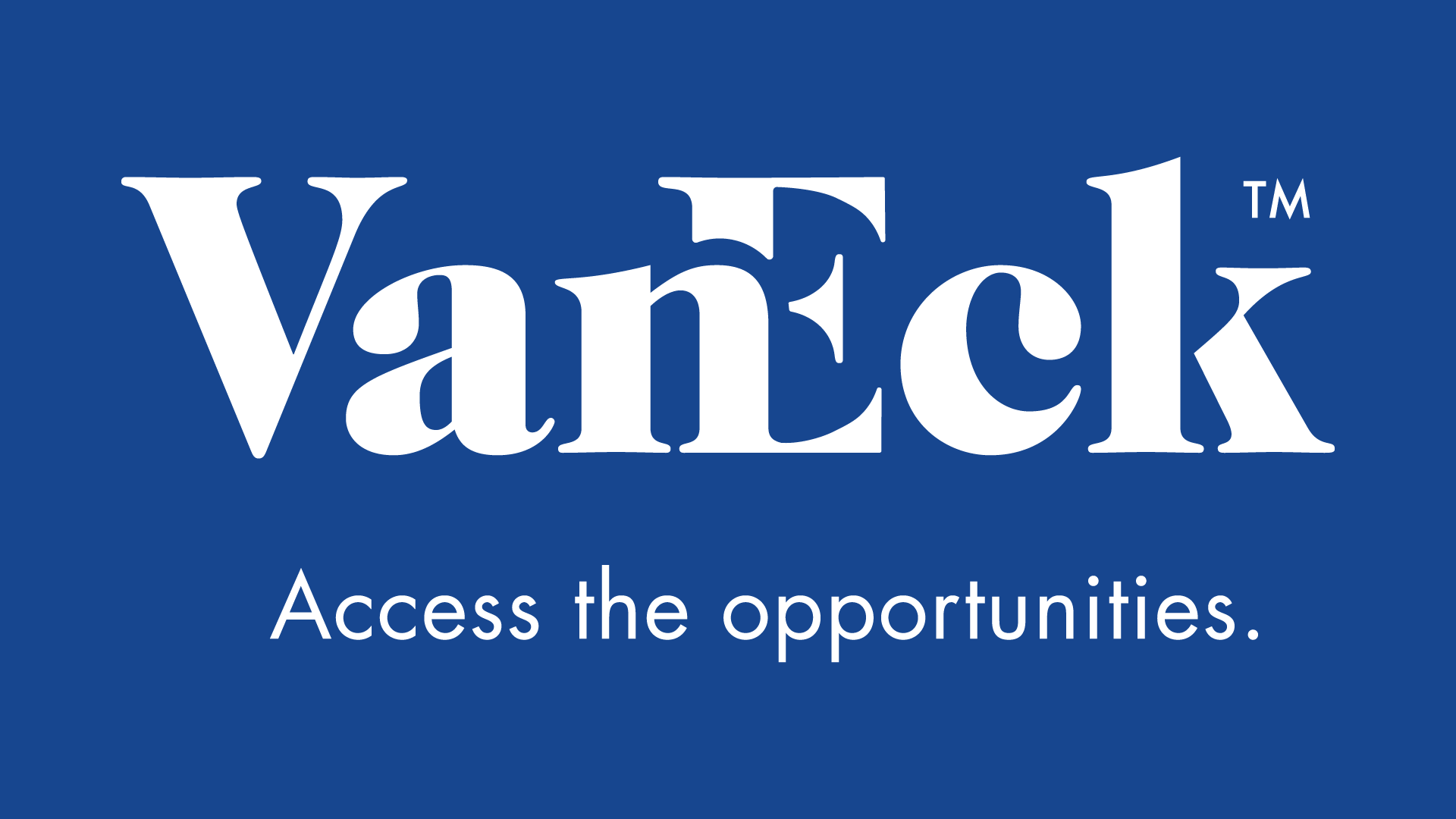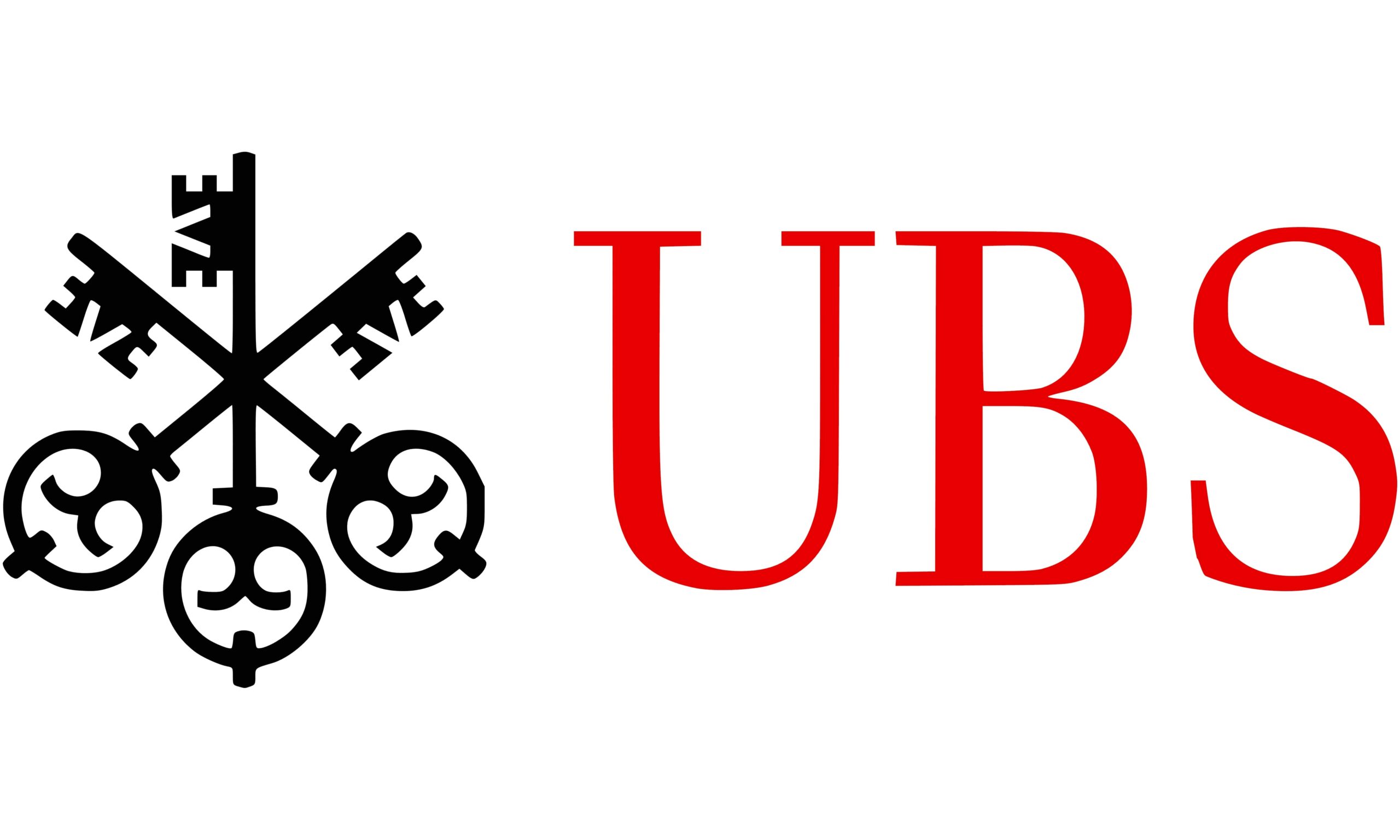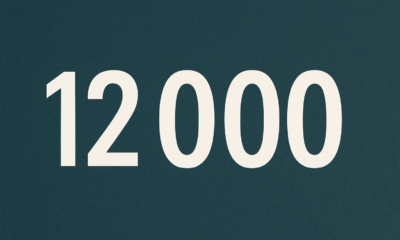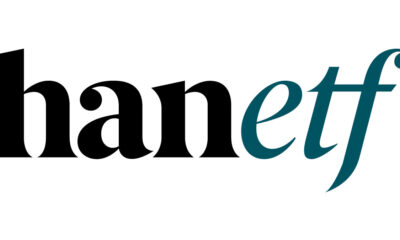Nyheter
Opportunities Exist in Emerging Markets Despite Challenges
Publicerad
10 år sedanden

Manager Commentary – Opportunities Exist in Emerging Markets Despite Challenges
By: Eric Fine, Portfolio Manager
November 2015
Executive Summary
- Emerging markets (EM) debt still facing many headwinds
- Strong idyosincratic drivers in Argentina, Venezuela and Russia
- EM real rates remain low by historic standards
Overview
We still see many headwinds for EM debt including, but not limited to, the possible upcoming Federal Reserve (Fed) rate hikes, a looming potential devaluation in China, unstable commodity prices, a still weak EM growth trajectory, inflation risk, implosion in Brazil and potentially approaching troubles in Turkey. Regarding the Fed, just as the market was consistently mispricing the timing of their first hike relative to “dots” implied timing, the same seems to be occurring for the timing and magnitude of the anticipated subsequent rate hikes…fasten your duration seatbelts, in our opinion. Despite China telling the world that its currency devaluation will happen someday, it did not trigger capital flight. Shouldn’t the usual rule of thumb on devaluations apply, namely, you do them big and early in conjunction with some real or pretend reforms? How does it not get worse the longer China waits? It is maintaining a currency peg while cutting rates, making it cheaper for investors to short the currency. Furthermore, the rapidly approaching Fed hike means a tighter policy in China, via the exchange rate peg, in a time of declining growth rates for an exporting economy. The risks of unstable or weak commodity prices seem high. Brazil remains in the grips of a vicious political and economic adverse feedback loop of worse outcomes (e.g., recession) creating divisive politics and policy paralysis. Turkey does not seem to be a market concern, but we think it should be. President Erdogan is about to complete his takeover of state institutions which includes the likely departure of the current central bank head. The policy implication could be a central bank easing policy, risking currency weakness and self-fulfilling inflation expectations. Additionally, they may be tempted to intervene in the currency market, threatening their already-low reserves.
But, we think there are still investments that can outperform in the face of these risks. Our portfolio could be thought of as consisting of two halves: idiosyncratic and defensive. The idiosyncratic portion is primarily composed of Argentina and Venezuela dollar-denominated bonds, and both Russia rouble- and dollar-denominated bonds. As the term idiosyncratic implies, we see asset price performance almost entirely based on country-specific factors rather than systematic factors such as U.S. interest rates, etc. In Argentina, the idiosyncratic driver is the new government’s likely settlement with its holdout creditors, while in Venezuela, government bonds are trading near recovery value. In Russia, the idiosyncratic driver for local-currency bonds is declining inflation. The defensive half of the portfolio is made up of some high-spread dollar-denominated short-dated bonds with cheap spreads relative to fundamentals. The spread duration is such that if one is correct, the reward would be the constant carry. One of the largest allocations is to low duration dollar-denominated bonds in South Korea, which is experiencing ongoing balance of payments surpluses and can perform defensively in risk-off scenarios.
Why focus on Argentina and Venezuela as key idiosyncratic diversifiers? We have long maintained that the November presidential elections in Argentina would result in a more market-friendly government than the one established under former President Cristina Kirchner. The election victory of the opposition candidate Mauricio Macri – which was not an obvious outcome even a couple of months ago – might be a real game-changer. The new government’s line-up is very impressive, and so far, Macri has been sticking to his pre-election promises of dealing with the existing imbalances, such as multiple exchange rates, in a timely fashion. The Macri administration is also likely to bring in the resolution of the holdouts situation, paving the way for Argentina’s eventual rating upgrade to single-‘B’. We consider it a good sign that in late November Moody’s changed Argentina’s outlook to positive. The bottom line is that the country is solvent, but it currently has no market access, which should change when the holdouts issue is resolved. This is now a more likely outcome, in our opinion. Venezuela’s macro outlook remains very challenging but markets continue to price in an extremely high chance of default under our recovery value assumptions. Our position is that 100% probabilities of default, in general, are to be viewed skeptically. It remains to be seen whether the National Assembly elections on December 6 will bring in meaningful policy changes or closer relations with the U.S. – but there are several very low-hanging policy “fruits” (such as higher gasoline prices, streamlining the exchange rate system) that can reduce imbalances if there is enough political will.
Why a less negative perspective on Russia? First, Russia is emerging in a new light following the Paris tragedy and the shooting down of its military plane by Turkey. We think that appetite for an escalation of sanctions against Russia in this new environment is low. The rating agencies have already noted that the improving relations between Russia and the U.S. may boost Russia’s rating. Second, the authorities’ response to a considerable deterioration in the external conditions following the introduction of sanctions was surprisingly orthodox and helped avoid a major drain on reserves. Russia seems to be emerging from this episode with a stronger credit profile (e.g., stable reserves, lower external debt, a larger current account surplus). Third, the rouble was used mainly as a shock-absorber in the past months and is now significantly undervalued both on a short-term basis and also when looking at fundamental metrics. Additionally, a major disinflation move is expected in the next 3-6 months allowing the central bank to ease further. All this makes us more comfortable owning non-sanctioned Russia securities (sovereigns [OFZs] and hard-currency quasi-sovereign debt). Fourth, duration makes the trade attractive, in our opinion. Inflation could decline to 6% by the end of 2016 with the policy rate (and yield curve) around 10%. So, with carry and duration, we are looking at rates that are possibly 100bp-200bp lower, which may provide a cushion for potential currency weakness.
Why still unable to find attractive local currency? First, even though real interest rates in emerging markets increased in the past few weeks, they remain low by historic standards and also in comparison to real rates in developed markets (real interest rates in the U.S. have recovered to their long-term average). The Federal Open Market Committee (FOMC) continues to give strong signals that it is ready to hike in December. Such a move might not only pull nominal yields in the U.S. (at least in the near term) but also real rates in emerging markets. Second, with the renminbi in November finally becoming part of the International Monetary Fund’s (IMF) Special Drawing Rights (SDR) basket, an international reserve asset which is based on the values of major currencies, the focus is now shifting to possible currency devaluation in China and its potential impact on the rest of EM FX (both in terms of the initial knee-jerk reaction and the subsequent rounds of “currency wars”). The offshore currency (CNH) is weakening relative to the controlled onshore currency (CNY). Third, even though there were some improvements in the EM macro data flow in the past weeks, we have yet to see any meaningful improvement in the EM growth outlook. Consensus continues to downgrade the 2016 growth forecasts in all EM regions – reflecting debt overhang and low commodity prices among other things. The expected growth differential between EM and the U.S. continues to narrow down, undermining the fundamental support for EM FX. We should note the potential for contagion risk in Brazil and Turkey perhaps, due to the size and importance of their economies.
A key feature of the intial steps of our investment process compares the risk premium of a country to its fundamentals) and we should emphasize that it does uncover pockets of value in local-currency markets. Colombia, Brazil, Zambia, Nigeria and others pay high real interest rates. However, in each of these cases, these investments failed the following step of our process which test specific risk factors. Colombia has been very correlated to oil prices, and we expect it will continue to be, and thus the failed correlation test, Brazil fails the policy/politics test, and Zambia and Nigeria are slowly moving to capital control regimes, in our opinion, and therefore, fail the policy/politics tests.
Exposure Types and Significant Changes The changes to our top positions are summarized below. Our largest positions are currently: South Korea, Argentina, Venezuela, South Africa and Russia.
- We added local-currency sovereign and hard-currency quasi-sovereign debt exposure in Russia. We expect to benefit from a combination of a change in the geopolitical narrative that reduces the potential risk of additional sanctions and disinflation that should allow the central bank to further slash interest rates.
- We reduced sovereign and quasi-sovereign hard-currency debt exposure in Chile due to concerns about the price of copper in light of the ongoing growth slowdown in China.
- We also reduced local-currency sovereign exposure in Romania due to concerns about local politics and policy noise.
- We reduced hard-currency sovereign exposure in Israel due to greater vulnerability risks as well as concerns about duration. We also reduced quasi-sovereign hard-currency exposure in Vietnam on greater vulnerability risks.
Fund Performance
The Fund (EMBAX) gained 0.13% in November, compared to a 1.11% loss for a 50% local-50% hard-currency index.
The Fund’s biggest winners were Venezuela (hard-currency sovereign), South Africa (hard currency sovereign and quasi-sovereign) and Ivory Coast (hard-currency sovereign). The Fund’s biggest losers were Argentina (hard-currency sovereign), Romania (local-currency sovereign) and Mongolia (hard-currency sovereign).
Turning to the market’s performance, the GBI-EM’s biggest winners were Nigeria, Brazil and Indonesia. The biggest losers were Colombia, South Africa and Hungary – with Colombia and South Africa affected by low commodity prices and policy rate hikes.
The EMBI’s biggest winners were Venezuela, Kazakhstan and Malaysia, while its biggest losers were Egypt, Chile and Mongolia (with the latter two affected by concerns about the price of copper).
Diversification does not assure a profit or prevent against a loss.
Expenses: Class A: Gross 1.32%; Net 1.25%. Expenses are capped contractually until 05/01/16 at 1.25% for Class A. Caps exclude certain expenses, such as interest. Please note that, generally, unconstrained bond funds may have higher fees than core bond funds due to the specialized nature of their strategies. The tables above present past performance which is no guarantee of future results and which may be lower or higher than current performance. Returns reflect applicable fee waivers and/or expense reimbursements. Had the Fund incurred all expenses and fees, investment returns would have been reduced. Investment returns and Fund share values will fluctuate so that investors’ shares, when redeemed, may be worth more or less than their original cost. Fund returns assume that dividends and capital gains distributions have been reinvested in the Fund at Net Asset Value (NAV). Index returns assume that dividends of the index constituents have been reinvested. Investing involves risk, including loss of principal; please see disclaimers on next page. Please call 800.826.2333 or visit vaneck.com for performance current to the most recent month ended.
Data Sources: Van Eck Research, FactSet. All portfolio weightings and statements herein as of November 30, 2015. Unless otherwise indicated.
Duration measures a bond’s sensitivity to interest rate changes that reflects the change in a bond’s price given a change in yield. This duration measure is appropriate for bonds with embedded options. Quantitative Easing by a central bank increases the money supply engaging in open market operations in an effort to promote increased lending and liquidity. Monetary Easing is an economic tool employed by a central bank to reduce interest rates and increase money supply in an effort to stimulate economic activity. Correlation is a statistical measure of how two variables move in relation to one other. Liquidity Illusion refers to the effect that an independent variable might have in the liquidity of a security as such variable fluctuates overtime. A Holdouts Issue in the fixed income asset class occurs when a bond issuing country or entity is in default or at the brink of default, and launches an exchange offer in an attempt to restructure its debt held by existing bond holding investors.
Emerging Markets Hard Currency Bonds refers to bonds denominated in currencies that are generally widely accepted around the world (such as the U.S.-Dollar, Euro or Yen). Emerging Markets Local Currency Bonds are bonds denominated in the local currency of the issuer. Emerging Markets Sovereign Bonds are bonds issued by national governments of emerging countries in order to finance a country’s growth. Emerging Markets Quasi-Sovereign Bonds are bonds issued by corporations domiciled in emerging countries that are either 100% government owned or whose debts are 100% government guaranteed. Emerging Markets Corporate Bonds are bonds issued by non-government owned corporations that are domiciled in emerging countries. A Supranational is an international organization, or union, whose members transcend national boundaries and share in the decision-making. Examples of supranationals are: World Bank, IMF, World Trade Organization. The European Central Bank (ECB) is the central bank for the euro and administers monetary policy of the Eurozone, which consists of 19 EU member states and is one of the largest currency areas in the world. The Labor Market Conditions Index (LMCI) is a dynamic factor model index that combines 19 labor market indicators to provide an assessment of overall labor market conditions. The Employment Cost Index tracks the changes in the costs of labor for businesses in the United States economy.
All indices are unmanaged and include the reinvestment of all dividends, but do not reflect the payment of transaction costs, advisory fees or expenses that are associated with an investment in the Fund. An index’s performance is not illustrative of the Fund’s performance. Indices are not securities in which investments can be made. The 50/50 benchmark (the “Index”) is a blended index consisting of 50% J.P. Morgan Emerging Markets Bond Index (EMBI) Global Diversified and 50% J.P. Morgan Government Bond Index-Emerging Markets Global Diversified (GBI-EM). The J.P. Morgan Government Bond Index-Emerging Markets Global Diversified (GBI-EM) tracks local currency bonds issued by Emerging Markets governments. The index spans over 15 countries. J.P. Morgan Emerging Markets Bond Index (EMBI) Global Diversified tracks returns for actively traded external debt instruments in emerging markets, and is also J.P. Morgan’s most liquid U.S-dollar emerging markets debt benchmark. The J.P. Morgan Emerging Country Currency Index (EMCI) is a tradable benchmark for emerging markets currencies versus the U.S. Dollar (USD). The Index compromises 10 currencies: BRL, CLP, CNH, HUF, INR, MXN, RUB, SGD, TRY and ZAR. The Consumer Confidence Index (CCI) is an indicator designed to measure consumer confidence, which is defined as the degree of optimism on the state of the economy that consumers are expressing through their activities of savings and spending.
Information has been obtained from sources believed to be reliable but J.P. Morgan does not warrant its completeness or accuracy. The Index is used with permission. The index may not be copied, used or distributed without J.P. Morgan’s written approval. Copyright 2014, J.P. Morgan Chase & Co. All rights reserved.
Please note that the information herein represents the opinion of the portfolio manager and these opinions may change at any time and from time to time and portfolio managers of other investment strategies may take an opposite opinion than those stated herein. Not intended to be a forecast of future events, a guarantee of future results or investment advice. Current market conditions may not continue. Non-Van Eck Global proprietary information contained herein has been obtained from sources believed to be reliable, but not guaranteed. No part of this material may be reproduced in any form, or referred to in any other publication, without express written permission of Van Eck Securities Corporation ©2015 Van Eck Securities Corporation.
Investing involves risk, including loss of principal. You can lose money by investing in the Fund. Any investment in the Fund should be part of an overall investment program, not a complete program. The Fund is subject to risks associated with its investments in emerging markets securities. Investing in foreign denominated and/or domiciled securities may involve heightened risk due to currency fluctua-tions, and economic and political risks, which may be enhanced in emerging markets. As the Fund may invest in securities denominated in foreign currencies and some of the income received by the Fund will be in foreign currencies, changes in currency exchange rates may negatively impact the Fund’s return. Derivatives may involve certain costs and risks such as liquidity, interest rate, market, credit, management and the risk that a position could not be closed when most advantageous. The Fund may also be subject to credit risk, in¬terest rate risk, sovereign debt risk, tax risk, non-diversification risk and risks associated with non-investment grade securities. Please see the prospectus and summary prospectus for information on these and other risk considerations.
Investors should consider the Fund’s investment objective, risks, and charges and expenses carefully before investing. Bond and bond funds will decrease in value as interest rates rise. The prospectus and summary prospectus contain this as well as other information. Please read them carefully before investing. Please call 800.826.2333 or visit vaneck.com for performance information current to the most recent month end and for a free prospectus and summary prospectus.
vaneck.com | 800.826.2333
Van Eck Securities Corporation, Distributor
666 Third Avenue | New York, NY 10017
Du kanske gillar
-


EMEE ETF är en aktivt förvaltad ETF med fokus på emerging markets
-


XDEX ETF investerar i emerging markets utanför Kina
-


AIQT ETF spårar företag från emerging markets som följer Parisavtalet
-


AIQT ETF företag i emerging markets som följer Parisavtalet
-


AMEM ETF, de ledande aktierna från tillväxtmarknaderna i en enda transaktion
-


AE5A ETF köper de största företagen från världens emerging markets
Nyheter
CEB3 ETF satsar på japanska aktier och valutasäkrar dem i Euro
Publicerad
5 timmar sedanden
15 juli, 2025
iShares MSCI Japan ESG Enhanced UCITS ETF EUR Hedged (Acc) (CEB3 ETF) med ISIN IE0002SCQ8X0, försöker följa MSCI Japan ESG Enhanced Focus (EUR Hedged)-index. MSCI Japan ESG Enhanced Focus (EUR Hedged)-index följer de största företagen från Japan. Indexet är utformat för att maximera exponeringen för positiva miljö-, sociala och styrningsfaktorer (ESG) och samtidigt minska koldioxidekvivalentexponeringen för koldioxid (CO2) och andra växthusgaser (GHG) samt minimera deras exponering för potentiella utsläppsrisker från fossila bränslen reserver. Valutasäkrad till euro (EUR).
Den börshandlade fondens TER (total cost ratio) uppgår till 0,18 % p.a. iShares MSCI Japan ESG Enhanced UCITS ETF EUR Hedged (Acc) är den enda ETF som följer MSCI Japan ESG Enhanced Focus (EUR Hedged)-index. ETFen replikerar resultatet för det underliggande indexet genom samplingsteknik (köper ett urval av de mest relevanta indexbeståndsdelarna). Utdelningarna i ETFen ackumuleras och återinvesteras.
Den börshandlade fondens lanserades den 5 augusti 2024 och har sin hemvist i Irland.
Varför CEB3?
Syftar till att ge exponering mot en portfölj av japanska aktiepapper som är en del av MSCI Japan Index och syftar till att överträffa dekarbonisering och andra minimistandarder för ett EU Climate Transition Benchmark (CTB) och maximera exponeringen mot emittenter med högre ESG-betyg.
Utesluter företag som är inblandade i kontroversiella, konventionella och kärnvapen, civila skjutvapen, termiskt kol, tobak eller okonventionell olja och gas. Företag som klassificeras som att bryta mot FN:s Global Compact-principer, har en ”Röd” MSCI ESG Controversies-poäng eller inte har bedömts av indexleverantören för en ESG-kontroverspoäng eller ett ESG-betyg.
Antar en bindande och betydande ESG-optimeringsmetod för hållbara investeringar. Detta innebär att fonden kommer att integrera ESG-information i sin investeringsprocess för att optimera exponeringen mot emittenter för att uppnå ett högre ESG-betyg och minska exponeringen mot koldioxidutsläpp jämfört med moderindexet samtidigt som optimeringsbegränsningar uppfylls.
Investeringsmål
Fonden strävar efter att uppnå avkastning på din investering, genom en kombination av kapitaltillväxt och inkomst på fondens tillgångar, vilket återspeglar avkastningen från MSCI Japan ESG Enhanced Focus CTB Index, fondens jämförelseindex.
Handla CEB3 ETF
iShares MSCI Japan ESG Enhanced UCITS ETF EUR Hedged (Acc) (CEB3 ETF) är en europeisk börshandlad fond. Denna fond handlas på Deutsche Boerse Xetra.
Det betyder att det går att handla andelar i denna ETF genom de flesta svenska banker och Internetmäklare, till exempel DEGIRO, Nordnet, Aktieinvest och Avanza.
Börsnoteringar
| Börs | Valuta | Kortnamn |
| XETRA | EUR | CEB3 |
Största innehav
| Kortnamn | Namn | Sektor | Vikt (%) | ISIN | Valuta |
| 6758 | SONY GROUP CORP | Consumer Discretionary | 3,66 | JP3435000009 | JPY |
| 7203 | TOYOTA MOTOR CORP | Consumer Discretionary | 3,36 | JP3633400001 | JPY |
| 8306 | MITSUBISHI UFJ FINANCIAL GROUP INC | Financials | 3,15 | JP3902900004 | JPY |
| 6861 | KEYENCE CORP | Information Technology | 2,88 | JP3236200006 | JPY |
| 8316 | SUMITOMO MITSUI FINANCIAL GROUP IN | Financials | 2,43 | JP3890350006 | JPY |
| 8035 | TOKYO ELECTRON LTD | Information Technology | 2,22 | JP3571400005 | JPY |
| 8766 | TOKIO MARINE HOLDINGS INC | Financials | 2,19 | JP3910660004 | JPY |
| 4568 | DAIICHI SANKYO LTD | Health Care | 2,15 | JP3475350009 | JPY |
| 9983 | FAST RETAILING LTD | Consumer Discretionary | 2,14 | JP3802300008 | JPY |
| 6098 | RECRUIT HOLDINGS LTD | Industrials | 2,11 | JP3970300004 | JPY |
Innehav kan komma att förändras
Nyheter
UBS utökar sitt Core ETF-sortiment med räntebärande fonder
Publicerad
6 timmar sedanden
15 juli, 2025
- Sortimentet omfattar åtta omdöpta ränte-ETFer (Core ETF); sex av de åtta fonderna kommer att få en avgiftsreducering
- Core-sortimentet med räntebärande fonder erbjuder tillgång till ett brett utbud av räntebärande segment, inklusive amerikanska och Eurozonens stats- och företagsobligationer, samt inflationslänkade och inflationsskyddade produkter
UBS Asset Management (UBS AM) har meddelat att de har inkluderat åtta räntebärande fonder i sitt Core ETF-sortiment UBS Core-ETFerna med räntebärande fonder kommer att ligga bredvid Core-aktie-ETFerna och tillsammans förse kunderna med konkurrenskraftigt prissatta, högkvalitativa byggstenar för deras investeringsportföljer Core-sortimentet med räntebärande fonder inkluderar amerikanska och eurozonens stats- och företagsobligationer, samt inflationslänkade och inflationsskyddade produkter
André Mueller, chef för kundtäckning på UBS Asset Management: ”Vi har sett ett starkt gensvar från kunderna på våra Core-aktie-ETFer med inflöden på över 2,1 miljarder pund sedan lanseringen* Vi tror att kombinationen av våra Core-aktie- och ränte-ETFer kommer att vara ett attraktivt alternativ för storskaliga förmögenhetsförvaltare, institutionella och privata investerare Dessa kostnadseffektiva fonder utgör byggstenarna för portföljer och kompletteras av våra mer specialiserade, hållbara och valutasäkrade ETFer för att möta våra kunders föränderliga behov”
Det nya utbudet av UBS Core-ETFer med räntebärande tillgångar är**:
| Tidigare namn | Nytt name | Tidigare TER (%) | Ny TER (%) |
| UBS BBG EUR Treasury 1-10 UCITS ETF | UBS Core BBG EUR Gov 1-10 UCITS ETF | 0,09 | 0,09 |
| UBS BBG Euro Inflation Linked 1-10 UCITS ETF | UBS Core BBG Euro Inflation Linked Bond 1-10 UCITS ETF | 0,10 | 0,08 |
| UBS BBG US Treasury 1-3 UCITS ETF | UBS Core BBG US Treasury 1-3 UCITS ETF | 0,07 | 0,05 |
| UBS BBG US Treasury 7-10 UCITS ETF | UBS Core BBG US Treasury 1-10 UCITS ETF | 0,07 | 0,05 |
| UBS BBG US Treasury 10+ UCITS ETF | UBS Core BBG US Treasury 10+ UCITS ETF | n/a*** | 0,05 |
| UBS BBG TIPS 1-10 UCITS ETF | UBS Core BBG TIPS 1-10 UCITS ETF | 0,10 | 0,08 |
| UBS BBG MSCI Euro Area Liquid Corp 1-5 Sustainable UCITS ETF | UBS Core BBG Euro Area Liquid Corp UCITS ETF | 0,12 | 0,06 |
| UBS BBG US Liquid Corp UCITS ETF | UBS Core BBG US Liquid Corp UCITS ETF | 0,13 | 0,06 |
*Över 2,1 miljarder pund i inflöden till Core equity ETFer mellan 12 maj och 30 juni 2025
**Fonderna är registrerade för försäljning i Österrike, Tyskland, Schweiz, Danmark, Spanien, Finland, Frankrike, Storbritannien, Italien, Luxemburg, Liechtenstein, Nederländerna, Norge, Portugal och Sverige
***ETFen var tidigare endast tillgänglig som en säkrad andelsklass

Amundi MSCI World Ex USA UCITS ETF Dist (WEXF ETF) med ISIN IE0009BI8Z04, syftar till att följa MSCI World ex USA-indexet. MSCI World ex USA-indexet följer stora och medelstora aktier från utvecklade marknader världen över (exklusive USA).
Den börshandlade fondens totala kostnadskvot (TER) uppgår till 0,15 % per år. ETFen replikerar det underliggande indexets utveckling genom fullständig replikering (genom att köpa alla indexkomponenter). Utdelningen i ETFen delas ut till investerarna (årligen).
Amundi MSCI World Ex USA UCITS ETF Dist är en liten ETF med 55 miljoner euro i förvaltningstillgångar. Denna ETF lanserades den 12 februari 2025 och har sitt säte i Irland.
Investeringsmål
Amundi MSCI World Ex USA UCITS ETF Dist syftar till att så nära som möjligt, oavsett om trenden är stigande eller fallande, replikera utvecklingen för MSCI World ex USA-indexet (indexet), och att minimera spårningsfelet mellan delfondens substansvärde och indexets utveckling. Delfonden strävar efter att uppnå en nivå av spårningsfel för delfonden och dess index som normalt inte överstiger 1 %.
Handla WEXF ETF
Amundi MSCI World Ex USA UCITS ETF Dist (WEXF ETF) är en europeisk börshandlad fond. Denna fond handlas på flera olika börser, till exempel Deutsche Boerse Xetra.
Det betyder att det går att handla andelar i denna ETF genom de flesta svenska banker och Internetmäklare, till exempel Nordnet, SAVR, DEGIRO och Avanza.
Börsnoteringar
Största innehav
| Namn | Valuta | Vikt % | Sektor |
| SAP SE / XETRA | EUR | 1,46 % | Informationsteknologi |
| ASML HOLDING NV | EUR | 1,45 % | Informationsteknologi |
| NESTLE SA-REG | CHF | 1,28 % | Dagligvaror |
| NOVO NORDISK A/S-B | DKK | 1,15 % | Health Care |
| ROCHE HOLDING AG – GENUSSS | CHF | 1,07 % | Health Care |
| NOVARTIS AG-REG | CHF | 1,06 % | Health Care |
| ASTRAZENECA GBP | GBP | 1,06 % | Health Care |
| SHELL PLC GBP | GBP | 1,03 % | Energi |
| HSBC HOLDINGS PLC | GBP | 1,00 % | Finans |
| COMMONWEALTH BANK OF AUSTRALIA | AUD | 0,94 % | Finans |
Innehav kan komma att förändras

CEB3 ETF satsar på japanska aktier och valutasäkrar dem i Euro

UBS utökar sitt Core ETF-sortiment med räntebärande fonder

WEXF ETF investerar i hela världen utom USA

Virtune lanserar Virtune Coinbase 50 Index ETP på Nasdaq Helsinki

A slice of Bitcoin gives a big portfolio boost

De bästa ETFer som investerar i europeiska utdelningsaktier

Nordea Asset Management lanserar nya ETFer på Xetra

Svenska investerare — 21Shares Nasdaq Stockholm-sortiment har just blivit starkare

De bästa ETFerna med fokus på momentum

Hetaste investeringstemat i juni 2025
Populära
-

 Nyheter3 veckor sedan
Nyheter3 veckor sedanDe bästa ETFer som investerar i europeiska utdelningsaktier
-

 Nyheter3 veckor sedan
Nyheter3 veckor sedanNordea Asset Management lanserar nya ETFer på Xetra
-

 Nyheter3 veckor sedan
Nyheter3 veckor sedanSvenska investerare — 21Shares Nasdaq Stockholm-sortiment har just blivit starkare
-

 Nyheter2 veckor sedan
Nyheter2 veckor sedanDe bästa ETFerna med fokus på momentum
-

 Nyheter2 veckor sedan
Nyheter2 veckor sedanHetaste investeringstemat i juni 2025
-

 Nyheter2 veckor sedan
Nyheter2 veckor sedan12 000 artiklar om börshandlade fonder
-

 Nyheter2 veckor sedan
Nyheter2 veckor sedanPrimer: Injective, infrastructure for global finance
-

 Nyheter2 veckor sedan
Nyheter2 veckor sedanREX Shares lanserar tre nya covered call ETFer i Europa


